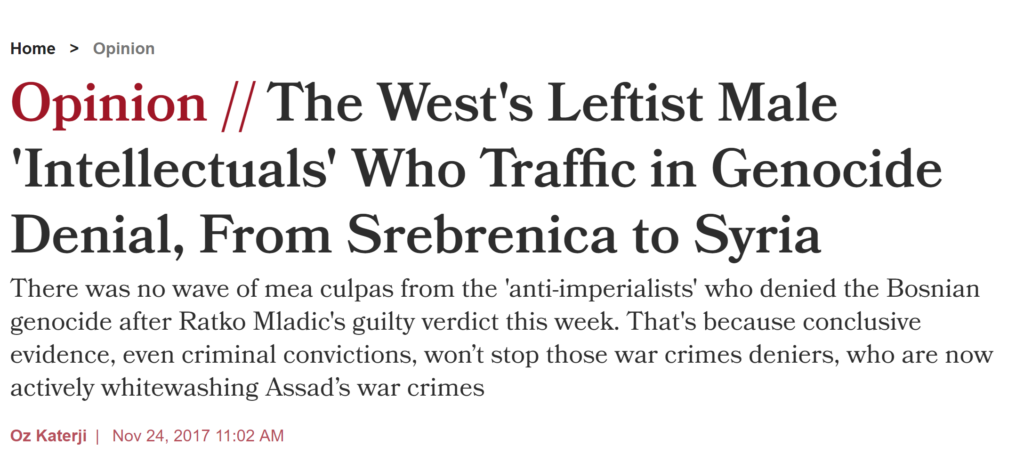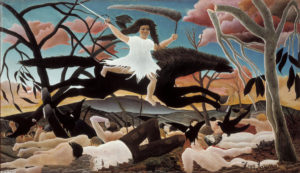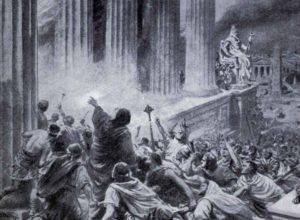 Cross-posted on the Corner.
Cross-posted on the Corner.
Kyle has already discussed the controversy over Halloween Moana here, concluding as follows:
The Left used to insist on seeing people as individuals, not as members of groups. The goal used to be that kids of different races would play together oblivious to one another’s superficial differences. This was commendable, and many a race barrier has fallen. Now the Left is determined to put those barriers back up, to teach kids to obsess over race. It is adamant that pigmentation has to be of overriding concern to you, and if it isn’t to your children, your children must be indoctrinated to divide people based on skin color, to calculate varying levels of “sensitivity” and “privilege” based on melanin. It’s not only ludicrous, it’s alarming. Don’t let this diseased mindset take hold. Go ahead and dress your kid as Moana this Halloween.
Quite.
I’m not sure that Sachi Feris (who “identifies as White”) blogging over at Raising Race Conscious Children would agree. Her views on Moana are predictable enough, but (as Charlie has noted) it turns out that there’s another character to be careful about, Elsa from Frozen:
Since [Feris’ daughter’s] 2017 Halloween choice was, in fact, Elsa, I returned to this costume choice and shared…
Shared
There is something ghastly about the soft, pious condescension of that verb, which well…
But back to the sharing:
“There is one thing I don’t like about the character of Elsa. I feel like because Elsa is a White princess, and we see so many White princesses, her character sends the message that you have to be a certain way to be “beautiful” or to be a “princess”…that you have to have White skin, long, blonde hair, and blue eyes. And I don’t like that message. You are White, like Elsa—if you dressed up as a character like Moana, who has brown skin, you would never change your skin color. But I’m not sure I like the idea of you changing your hair color to dress up as Elsa—because I think Elsa’s character could also be a short, brown-haired character like you.”
“No,” my daughter refuted. “I want you to make be a long, blonde braid like Elsa’s.”
“We can do that,” I agreed. “When we are dressing up as a made-up character who is White, it is OK to change how your hair looks, but I just want you to know that if you wanted to, you could dress up as Elsa and not change your hair.”
My guess is that a five-year-old might well have worked that out for herself. Nevertheless Feris’ daughter has clearly understood that the best way to dress up to try to look like someone else is, well, to dress up to look like that someone else.
Later on, we read that Ms. Feris, like a devout person scrabbling through holy books to find out what is or is not ‘permitted’, is still bothered by Moana and has thus turned to her smartphone to see what might be, as the enforcers now say, ‘okay’.
She tells shares with her daughter that:
“I’m trying to find more information about if a (White) person can dress up as another person’s culture in a way that honors the culture, without making fun of the culture or using the culture in a way that uses stereotypes or makes people who identify with that culture feel uncomfortable…” Through some additional back and forth, I elaborated on the idea of stereotypes (click here for a conversation about stereotypes from when my daughter was much younger) and the concept of cultural appropriation, though without using this phrase.
The word killjoy doesn’t begin to do justice to this miserable little anecdote.
But, wait, there’s more.
In a follow-up post Ms. Feris and Lori Riddick (who “identifies as Black/Bi-racial/Multi-racial”), entitled “Halloween as an Opportunity to Dismantle White Supremacy: Three Things We Believe This Halloween”, advise their congregation concerned parents what can be done:
- White parents who want to dismantle White supremacy have a special burden to check their entitlement on Halloween—and make sure that their children’s costume choices are not reinforcing a culture of racism.
Again, the distinctly ‘religious’ aspects of this are unmistakable, ranging from the assumption of guilt (“entitlement” ), to the distaste for the existing state of the culture (“a culture of racism”) and the reminder that neither they nor their children must fall, even accidentally, into the sin that is always out there (“make sure…not reinforcing”).
2. Dressing up as a White person (from the dominant culture of power and privilege) is not cultural appropriation—but consider the development of children’s healthy racial identities on Halloween.
We learn that Ms. Feris’ conversation sharing “with her daughter also aimed to push back against an image of beauty that values Whiteness in addition to a specific body type and hair color/style. Many children, both White children and people of color, do not fit into this image of beauty.” No opportunity for a sermon should ever be wasted. And on that topic:
3. Halloween is an opportunity to have a conversation with your child about race, power, and privilege
More trick than treat, I reckon.
Note to any surviving citizens of the Roman Empire: No disrespect is intended by the clumsy and doubtless inaccurate appropriation of your language contained in the title of this post.



 Writing in the
Writing in the  If I had to choose one book to read about the Bolsheviks this year it would be The House of Government: A Saga of the Russian Revolution by Yuri Slezkine.
If I had to choose one book to read about the Bolsheviks this year it would be The House of Government: A Saga of the Russian Revolution by Yuri Slezkine.
 Cross-posted on the
Cross-posted on the  It’s not hard to draw a line between messianic Judaism and (obviously) Christianity and from that on to later millenarian variants such as Marxism, but
It’s not hard to draw a line between messianic Judaism and (obviously) Christianity and from that on to later millenarian variants such as Marxism, but  A week or two back, I
A week or two back, I 




 From
From